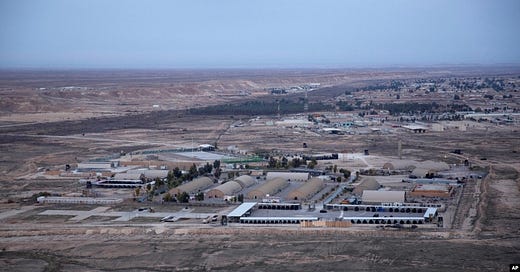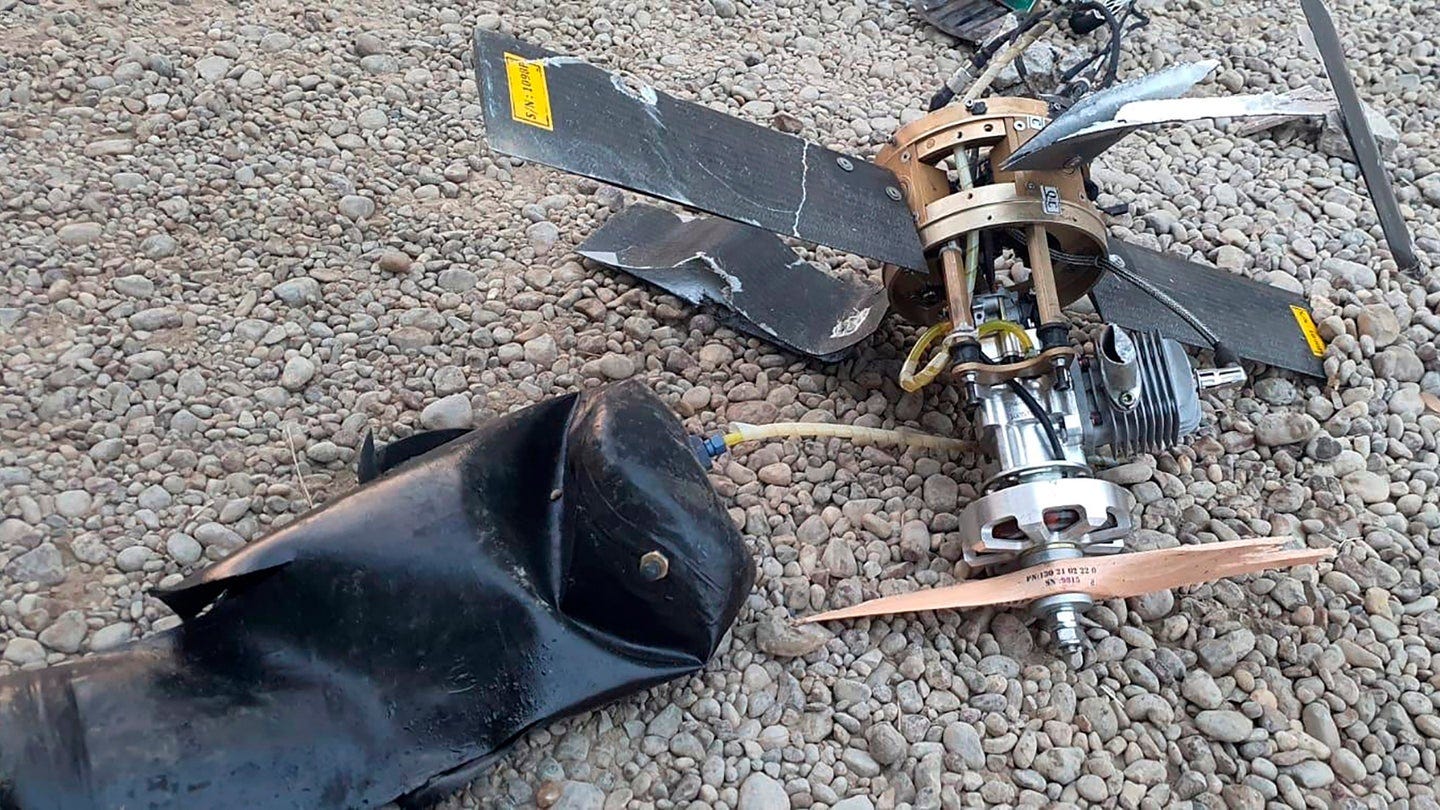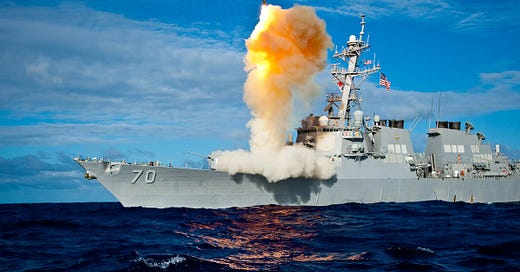

Discover more from Weapons and Strategy
US Bases in Iraq and Syria Have No Effective Air Defenses
Will we allow our troops to continually be at risk?
For years I have been complaining that our vulnerable bases in Iraq and Syria lacked adequate air defenses. Bottom line: they still do.
It is reported that the Biden administration asked for a "pause" in the upcoming Israeli land attack on Gaza so we could rush air defenses to the Middle East.
In the past week 21 US personnel received minor injuries due to drone attacks at Al Assad Airbase, Iraq, and Al-Tanf Garrison, Syria.
There have been 14 attacks on these bases in the past week, perhaps more than 20. The numbers vary as the Pentagon slowly confesses what transpired.
The strikes against US bases have been either by Iranian-supplied drones operated by Iranian proxy militias, or by Iranian supplied rockets, operated by the same Iranian proxy militias.
There is no doubt about the source of the attacks. But the administration does not show any interest in challenging Iran.
US bases have very limited protection, made worse by the fact that the US does not pursue the pro-Iranian militias firing these weapons at our personnel.
US troops primarily rely on the C-RAM. C-RAM is a land-adaptation of the US Navy's Phalanx gun system. The rapid fire, but short range, Phalanx system has never stopped any attack on a naval ship, and it is not much different when it comes to knocking out drones or rockets.
C-RAM, like Phalanx, has problems at night because it primarily relies on visual recognition of incoming threats. Iranian drones are made of plastic or other non-reflective material, so they don't have much, if any radar signature, and also are hard to see, especially at night or in low light conditions.
Even so, if the Pentagon story is right, some rockets and drones have been shot down, probably by C-RAM. Luckily the rockets being used are highly inaccurate and can be tracked by radar, although hitting them is another matter.
But the big story is that the US has not provided effective weapons to protect US bases.
They could have done so, at least in part, had they heeded warnings and really cared about our troops in the field. Obviously our soldiers were a low priority.
The US bought two batteries of Israel's Iron Dome system and have had them for a number of years, allegedly studying how to use them. For a while they shipped Iron Dome to Guam, for no apparent reason because the threat to Guam from China is from heavy missiles. Iron Dome is designed to go after terrorist weapons, not heavy missiles. Now the Pentagon has announced that the two Iron Dome batteries are being boxed up and sent to Israel, where they are needed.
This leaves the Pentagon with empty hands when it comes to practical missile defense for our bases in Iraq and Syria.
America does have the famous Patriot system, but Patriot is of no use against slow flying drones or cheap rockets.
The Army could have bought Iron Dome for our bases, but rejected it on specious grounds, wanting to design their own alternative from scratch. It will be some years before the Army's "integrated" alternative will be fielded, assuming it works. It will require the buildup of a new infrastructure for manufacturing the weapon, and it will also need to develop a logistic, support and training system, because they don't exist now.
The Army calls this its Indirect Fire Protection Capability (IFPC), itself a curious name since the stuff being fired at our bases is anything but indirect. The IFPC system fires AIM-9X Sidewinder missiles, which track infrared signatures. Drones have almost no infrared signatures. The AIM-9X (and the even longer range and more expensive AIM-120 AMRAAM, which uses radar) probably would work against cruise missiles and maybe cheap rockets (assuming they can be launched in time), but there are no guarantees it will work.
Typically terrorists put some missiles or drones in a car or pick up truck, drive near a US base, and then launch. There is very little time to react because the weapons literally fly over the fence.
Iron Dome, by contrast, has already been tested against cruise missiles and drones, and it does work. The Marines, unlike the Army, tested Iron Dome, bought a couple of batteries, but like the Army, wanted to develop their own system. Bottom line: more delays in fielding effective weapons.
One of the reasons why the US lacks air defenses is the stubborn resistance of the military services to acquire technology from abroad and field solutions as quickly as possible. The Army's plethora of alleged reasons does not excuse its irresponsibility and its failure to protect our bases and our troops.
Given where we are now, the US has a couple of choices. One of them is to pull our troops out of highly vulnerable bases in Iraq and Syria. The downside of this is the region will perceive this as a cut and run exercise and another blow to US prestige and US deterrence. The terrorists will sing and dance in the streets.
The second alternative is to take out the terrorists --go after the militias working for Iran and put them out of business. This is hard to do, but we have done it before and it is possible. When you let a threat fester it only gets worse, something Israel is learning the hard way. The overall lack of response to terrorist attacks by the United States is shocking. Right now there is little reason to believe that the Biden administration will do anything except to keep our troops on US bases vulnerable to more attacks.

















Has Syria asked the United States to set up bases in that country?
Time to close them down and use our money to protect our schools.